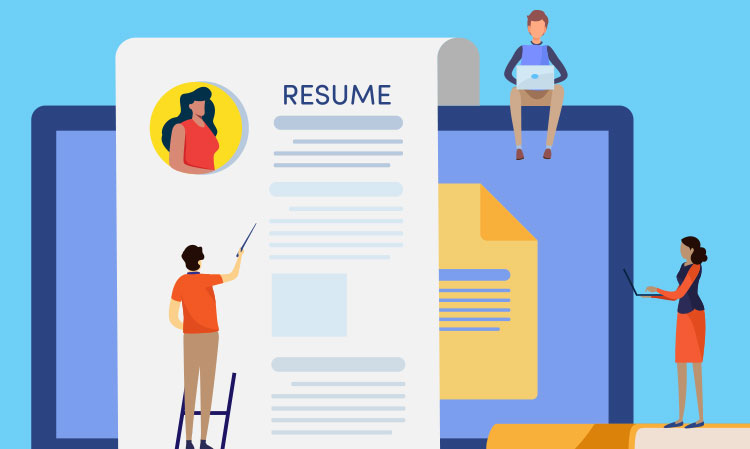Creativity knows no bounds, and creative professionals, including artists, designers, and writers, often find themselves pushing the boundaries of traditional resume formats. While their work speaks volumes, an effective resume is still a powerful tool for showcasing their unique talents and making a memorable impression. In this comprehensive guide, we will explore how creative professionals can craft resumes that reflect their artistry, design prowess, and writing talent, helping them stand out in a competitive landscape.
- The Art of Visual Presentation: For creative professionals, the visual aspect of a resume is paramount. Your resume should be a canvas that mirrors your artistic flair. Consider incorporating innovative design elements such as colour schemes, typography, and layout that resonate with your personal style. Infuse visual appeal while ensuring the document remains professional and easy to read.
- Creative Summary Statements: The summary statement is your opportunity to captivate potential employers or clients right from the start. Craft a creative and compelling summary that not only introduces you but also reflects your artistic essence and professional identity. Avoid generic buzzwords; instead, infuse it with vivid language that paints a picture of your passion and creative journey.
- A Portfolio that Tells a Storey: For creative professionals, your portfolio is the heart of your resume. Create a dedicated section to showcase your best work. Whether it’s artwork, graphic design projects, or writing samples, ensure your portfolio weaves a compelling narrative. Each piece should have a storey to tell, demonstrating your skills, creativity, and evolution as a creative.
- Highlighting Your Creative Process: Creative professionals often have a unique approach to their work. Incorporate a section that delves into your creative process. Explain how you approach projects, from ideation and research to execution. This helps potential clients or employers gain insight into your methods and how you can contribute to their projects.
- Writing with Creativity: If you’re a writer, your writing skills should shine through in your resume. Craft your resume with precision, infusing it with creativity, vivid language, and storytelling elements. Convey your writing style and versatility in every sentence, showcasing your ability to communicate effectively.
- Showcasing Artistic Achievements: Creative professionals often accrue a myriad of artistic achievements throughout their careers. Whether you’ve exhibited your art, received design awards, or published your writing, feature these accolades prominently. Celebrate your achievements and their impact on your field.
- Professional Experience with a Creative Spin: While creative professionals might not have traditional work experiences, highlight any relevant positions, projects, or freelance work that demonstrate your creative prowess. Describe your roles in detail, focusing on the contributions you made and the impact you had.
- Customising for the Audience: Every creative project has a unique target audience, and your resume should follow the same principle. Tailor your resume for the specific audience you’re addressing. If you’re applying for a job as a graphic designer, emphasise design elements; if you’re pitching to a literary magazine, highlight your writing prowess.
- Digital and Social Presence: In today’s digital age, your online presence is just as vital as your resume. Ensure your website or portfolio is up-to-date and easily accessible. Link your professional social media profiles, like LinkedIn or Behance, as potential clients and employers often verify online profiles as part of their decision-making process.
- Simplicity in Complexity: Balancing creativity with professionalism can be challenging. Your resume should be a work of art, but it should also remain clear and easy to read. Avoid overly complex designs that might distract from the content. The goal is to enhance your creative identity, not overshadow it.
As a creative professional, your resume is a canvas upon which you can showcase your artistry, design prowess, and writing talent. It’s your opportunity to tell your storey, captivate potential clients or employers, and demonstrate your creative skills. By incorporating these strategies into your resume, you can ensure that it resonates with your artistic essence and creates a lasting impression in the minds of those who have the pleasure of viewing your work. Your resume should be an ever-evolving piece of your creative journey, always ready to tell the next chapter of your storey as a creative professional.



